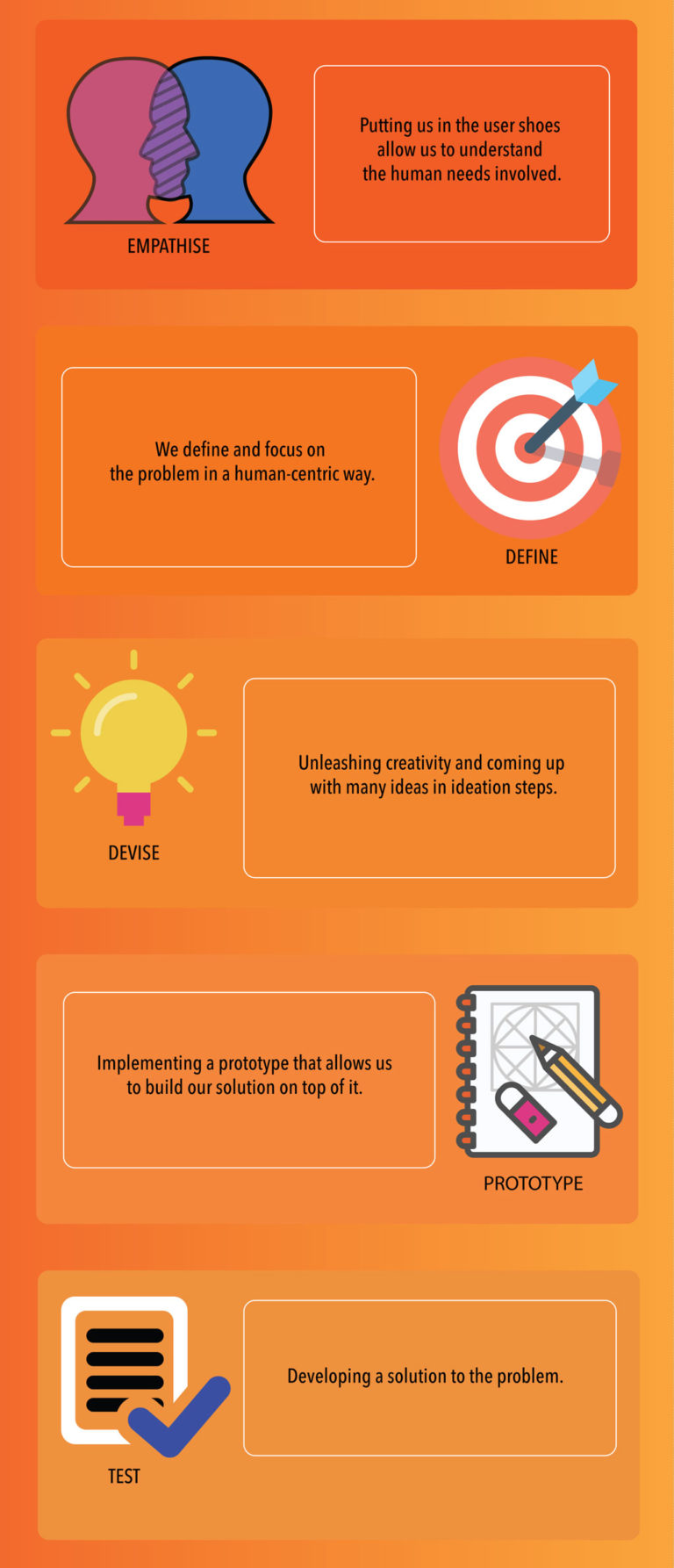5 steps design thinking process
Our 5 phases design thinking process is not always consequential — they don’t have to be arranged in any specific order we encourage repetition and collateral iteration. Therefore the phases should be considered as different modules providing elements to a project, rather than consequential steps. However, the great thing about our five-steps design thinking model is that it pinpoints the 5 stages/modules of a generic design project and of any innovative problem solving related assignment. Every project is different and demands different solutions, it will involve activities specific to a certain problem statement, but the main idea behind each step remains the same.
How we use design thinking
Design thinking to us means flexibility and should not be seen as a standardized and rigid approach to design; the stages identified in the infographic above should serve as a guide to the process that will typically be employed. For a particular project, the stages will be swapped and performed concurrently in order to widen the solutions spectrum of choice, by doing this we will gain the most accurate and informative insights.

Feel free to embed the infographic on your website, remember to include designdiverso.com attribution.
According to the above infographic, one of the key benefits of our five-steps model is based on how we can acquire knowledge in the later phases and use it to contribute to earlier steps. Information is constantly used in both ways in order to learn more about the problem and solutions spectrum and to redefine the problem(s). The designers are entering this perpetual loop that provides new insights, developing new ways of understanding and viewing the product and its potential uses and users as well as the problems they face.
Our design thinking process is based on the concept of bringing ideas to life based on how real-life users think, feel and behave. We unleash our creativity, iterating, being flexible and focused on collaboration between designers, engineers, and users
Design thinking can solve complex problems by:
- Empathising: Putting us in the user shoes allow us to understand the human needs involved.
- Defining: We define and focus on the problem in a human-centric way.
- Devising: Unleashing creativity and coming up with many ideas in ideation steps.
- Prototyping: Implementing a prototype that allows us to build our solution on top of it.
- Testing: Developing a solution to the problem.

